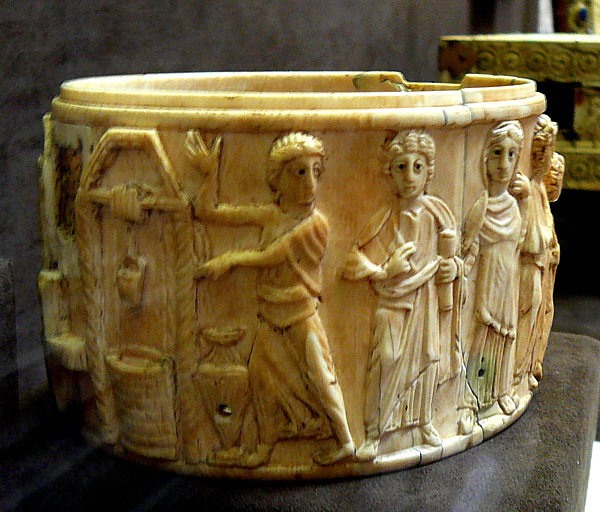Christ and the Samaritan Woman at the Well

Byzantine, 5th-6th century
Ivory Pyx
Musée National de Moyen Age, Paris
This is the episode in John 4:3-29 where Jesus engages a Samaritan woman at a well. Jesus is the one carrying the scroll, symbol of his authority. He is not seated, as John 4:6 states, presumably because of the shape of the pyx. The woman stands at his right, looking back at him as she takes water from the well. Her raised hand is the traditional signifier of speech. In the text, she has much to say. The vessel's foot, height, and ʔ-shaped handles are characteristic of the kantharos, which in classical and paleo-Christian iconography symbolized resurrection to eternal life.
I regret that I did not photograph the entire pyx and thus cannot identify the woman on Jesus' left. Schiller (160) notes that in the Echternach Golden Gospels the well episode is juxtaposed with that of the woman taken in adultery, so perhaps the same is true of this much earlier work. Indeed, it could be that the one figure of Jesus is here joining the two episodes, since his blessing hand is pointed not at the Samaritan but at the other woman.
See more images and commentaries on Jesus and the Samaritan Woman.
Read more about the kantharos in Christian symbolism.
Photographed at the site by Richard Stracke, shared under Attribution-NonCommercial-ShareAlike license.